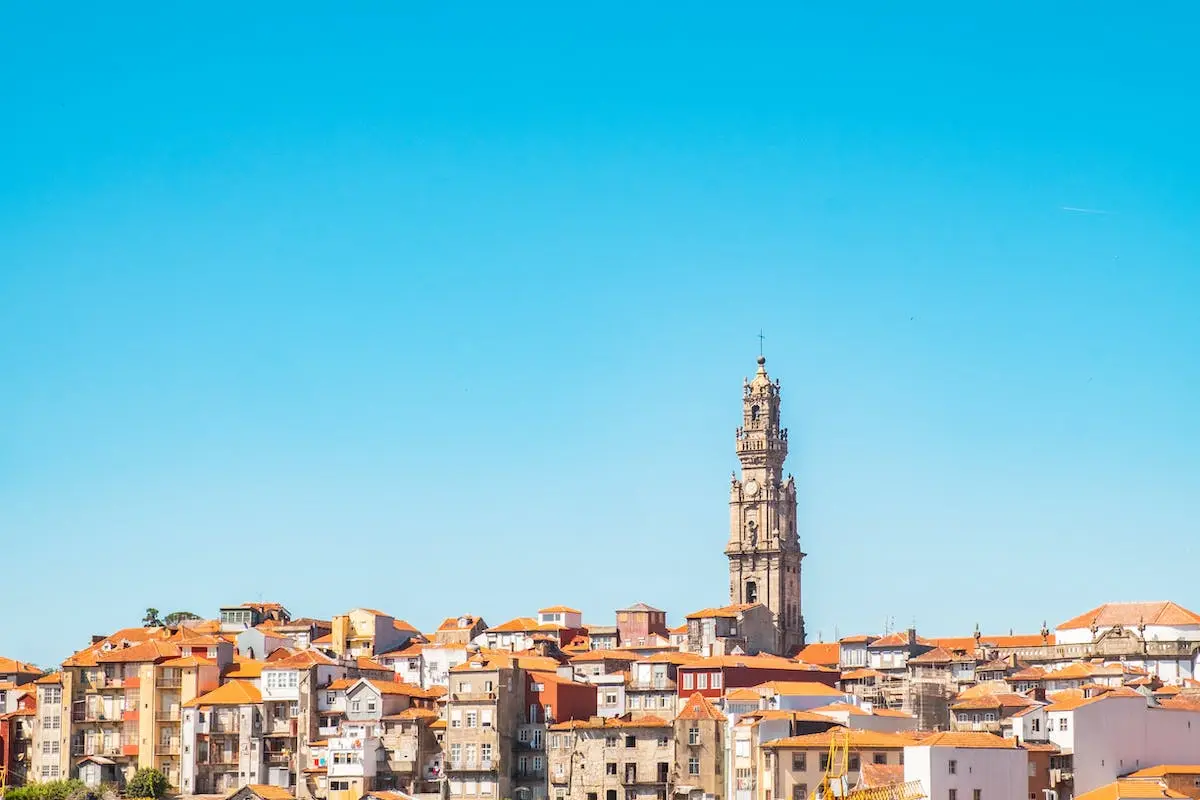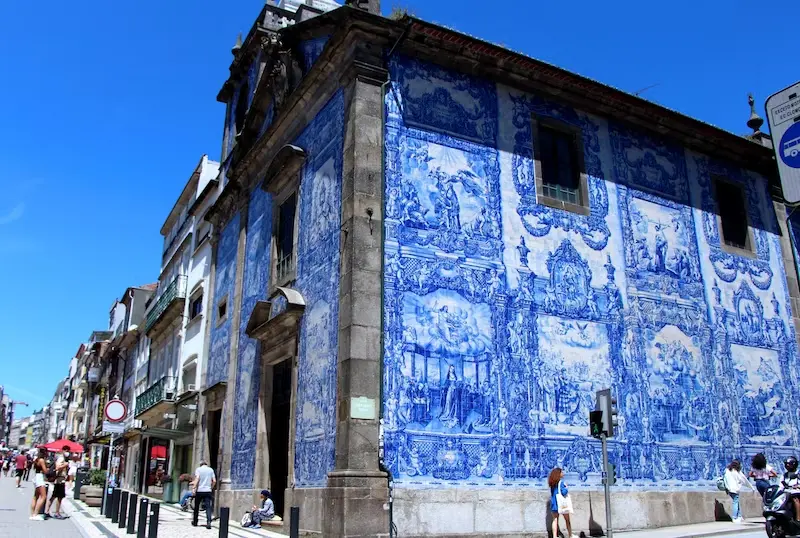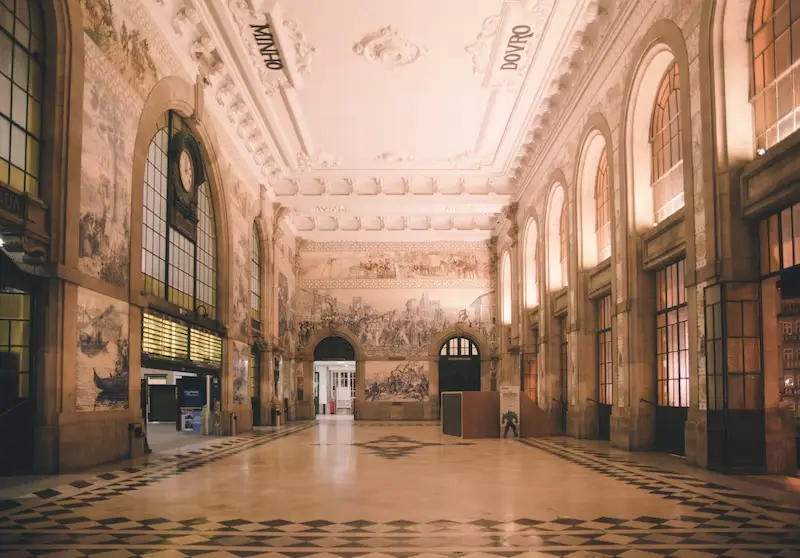15 Must-See Landmarks in Porto, Portugal's Second City

Journey through Porto, where tradition and modernity blend seamlessly, offering Porto must-see experiences. Rich in culture, history, and architectural wonders, Porto captures the essence of a place where time-honored traditions coexist with contemporary innovation. From the historic Ribeira district with its colorful facades and narrow cobbled streets to modern marvels like the Casa da Música, each corner of Porto tells a story.
The city's unique charm extends from the bustling banks of the Douro River to the majestic Dom Luís I Bridge, making it a treasure trove of experiences for any traveler seeking to immerse themselves in authentic Portuguese culture. Whether you're exploring the renowned Port wine cellars in Vila Nova de Gaia or admiring the azulejo-tiled buildings, Porto offers a journey through a rich tapestry of history and modernity.
Before diving into this exploration, consider using Nannybag luggage storage Porto for a hassle-free experience, allowing you to traverse the city's cobbled streets and explore its landmarks with ease.
1. Livraria Lello: A Literary Jewel
Livraria Lello, often regarded as one of the most beautiful bookstores in the world, is a beacon for book lovers and architecture enthusiasts alike in Porto. This century-old bookstore is not just a place to buy books; it’s a cultural landmark. Its neo-Gothic façade, reminiscent of a time when art and literature were deeply intertwined, invites visitors into a world where every detail is a nod to the literary world.
A Haven for Book Enthusiasts
Inside, you are greeted by a stunning stained-glass skylight, casting a warm, ethereal glow over the bookstore. The iconic red staircase, seemingly floating in mid-air, is a marvel of design and engineering. The shelves are lined with books of various genres, offering something for everyone. The Art Nouveau decor, with its intricate wood carvings and ornate decorations, creates an inspiring and cozy ambiance.
2. Torre dos Clérigos: Porto's Towering Landmark
The Torre dos Clérigos is not just a structure; it's an emblem of Porto's historical and architectural landscape. Standing tall at 76 meters, this tower offers one of the best vantage points in the city.
A Climb to Remember
Climbing the tower’s narrow spiral staircase, a journey of over 200 steps, is challenging and an adventure. As you ascend, you’ll pass through various levels, each offering a glimpse into the tower's history and construction.
3. Porto Cathedral: A Mélange of Architectural Styles
The Porto Cathedral or Sé do Porto, is a monument to the city's rich history and architectural evolution.
Historical Significance
As one of Porto's oldest monuments, the cathedral has witnessed the city's growth and changes over centuries. Its fortress-like exterior gives way to an interior that is a tapestry of Romanesque, Gothic, and Baroque styles.
Artistic and Religious Heritage
The cathedral’s cloisters, adorned with azulejos, are a highlight, offering a serene and artistically rich space. The intricate altarpieces and the silver altarpiece of Saint Vincent are just a few examples of the artistic treasures housed within its walls.
4. Palácio da Bolsa: Neoclassical Splendor
The Palácio da Bolsa, a symbol of Porto's commercial heritage, is a masterpiece of 19th-century architecture. Once a bustling stock exchange, it is now a monument to the city’s past economic prowess and architectural beauty.
Architectural Masterpiece
Each room within the Palácio da Bolsa tells its own story, with the Arabian Hall being a standout feature. Inspired by the Alhambra in Granada, this room is a testament to the craftsmanship and artistic vision of the time.
5. Vila Nova de Gaia: The Realm of Port Wine
The Heart of Porto's Wine Culture
Vila Nova de Gaia is more than just a district across the Douro River; it's the heart and soul of Porto's renowned Port wine industry. The area, with its picturesque riverside and traditional Rabelo boats, presents a postcard view of Porto's wine culture.
A Wine Lover's Paradise
The Port wine cellars of Vila Nova de Gaia are famous worldwide. Here, visitors can delve into the fascinating history of Port wine, learning about its production, aging process, and the unique factors that give it its distinct flavor. Each cellar offers a different experience, from traditional to more contemporary settings, allowing visitors to explore the diversity of this exquisite wine.
6. Douro Valley: A Natural and Cultural Wonder
The Birthplace of Port Wine
The Douro Valley, a UNESCO World Heritage site, is not just visually stunning but also culturally significant. Known as the birthplace of Port wine, the valley's terraced vineyards are a testament to centuries of winemaking tradition.
Immersive Experiences in the Valley
A trip to the Douro Valley is often a highlight of a visit to Porto. Guided tours provide an immersive experience, taking visitors through the vineyards, introducing them to local winemakers, and offering tastings of some of the region's finest wines. The river cruises along the Douro add another dimension to the experience, allowing visitors to enjoy the valley's natural beauty from a different perspective.
7. Casa da Música: A Contemporary Architectural Icon
A Landmark of Modern Design
Casa da Música, standing as a symbol of modernity in Porto, is a must-visit for anyone interested in contemporary architecture and culture. The building's bold, unconventional design has made it an icon of the city.
A Hub for Music and Culture
Internationally acclaimed for its innovative design and acoustics, Casa da Música is a hub for musical performances, ranging from classical to avant-garde. The building hosts a variety of concerts and cultural events throughout the year, making it a dynamic part of Porto's cultural scene.

8. Igreja do Carmo: A Canvas of Azulejo Tiles
A Masterpiece of Tile Art
The Igreja do Carmo, with its exquisite azulejo tile facade, is a remarkable example of Porto's artistic heritage. These blue and white tiles, typical of Portuguese art, depict religious and historical scenes in vivid detail, drawing the eye and capturing the imagination.
Exploring the Richness of Rococo
Built in the 18th century, the church is an outstanding example of Rococo architecture. Its lavish interior, filled with gold leaf, carved wood, and intricate frescoes, complements the artistic beauty of its exterior. The Igreja do Carmo is not just a place of worship but a testament to the artistic skill and religious devotion of the era.
9. Ribeira District: The Colorful Heart of Porto
A Vibrant Mosaic of Porto's Culture
The Ribeira District, nestled along the Douro River's picturesque banks, is Porto's pulsating heart. This UNESCO World Heritage site is more than just a scenic spot; it's a vibrant tapestry of Porto's culture and history. The narrow, winding streets lead to hidden plazas, each brimming with stories and local charm.
A Blend of History and Modernity
As you wander through the Ribeira District, you'll encounter a blend of historical buildings and contemporary establishments. The area's iconic colorful façades, adorned with traditional Portuguese tiles, contrast beautifully against the modern riverside eateries and cafes.
10. Dom Luís I Bridge: A Link Between Two Worlds
An Iconic Symbol of Porto
The Dom Luís I Bridge, a marvel of 19th-century engineering, symbolizes Porto's architectural and cultural prowess. Designed by a disciple of the famous Gustav Eiffel, this bridge's intricate metalwork and grandeur are a sight.
Experience Stunning Views
Walking across this double-deck bridge is an experience in itself. The upper deck offers panoramic views of the city and the Douro River – especially breathtaking at sunset. The lower deck, closer to the river, provides a more intimate experience of the Douro's flow and the bustling life along its banks.
11. Foz do Douro: Where the River Meets the Sea
A Serene Escape from the City
Foz do Douro, where the Douro River gracefully merges with the Atlantic Ocean, offers a serene contrast to the city's bustling center. This area, known for its beautiful beaches and promenades, is perfect for those seeking a tranquil retreat.
Elegant Charm and Seaside Delights
Stroll along the elegant 19th-century homes that line the promenades, enjoy a meal or a coffee at one of the chic cafes, and embrace the laid-back atmosphere. The sunset views from Foz do Douro are particularly stunning, making it an ideal spot for evening relaxation.
12. São João Festival: A Celebration of Porto's Spirit
Porto's Most Joyous Night
The São João Festival epitomizes Porto's community spirit and joy. Held annually on the night of June 23rd, this festival transforms the city into a carnival of color, music, and festivity.
A Unique and Playful Tradition
Join the locals in one of Porto's most beloved traditions – playfully hitting each other on the head with plastic hammers. This quirky tradition adds a touch of fun and camaraderie to the night's festivities.

13. Art Deco in Porto: A Stroll Through History
Uncovering Art Deco Treasures
Porto's embrace of the Art Deco movement is evident in its architectural landscape, adding a unique flair to the city's aesthetic. As you stroll through Porto, you encounter numerous buildings that exhibit classic Art Deco elements – geometric shapes, bold lines, and ornate detailing. These structures are not just buildings but a testament to a time when artistic expression found a new voice in architecture.
Iconic Examples of Art Deco
One of the most prominent examples is the São Bento train station, known for its azulejo tile panels and featuring Art Deco designs in its structure and interior. Beyond this, the city has several lesser-known yet equally fascinating buildings that showcase the Art Deco style, from residential homes to commercial establishments. Each of these buildings offers a glimpse into the era when Art Deco was at the forefront of modern design.
14. Exploring Porto's Wine Cellars
A Deep Dive into Porto's Wine Heritage
The Port wine cellars of Porto are not just storage spaces; they are portals into the city's longstanding relationship with wine. These cellars, some dating back to the 17th and 18th centuries, offer more than just wine tastings; they provide a comprehensive experience of Porto’s wine culture.
Guided Tours: A Learning Experience
Guided tours of these cellars are an education in the art of winemaking. Visitors learn about the intricate process of producing Port wine, from grape selection to aging. Each cellar has its unique story and method, making every tour a distinct experience.
15. Mesmerizing Views of the Douro
The Douro: A Natural Masterpiece
The Douro River is more than a waterway; it's a defining feature of Porto's landscape. The river offers a constantly changing canvas, reflecting the city’s life and beauty. From the bustling Ribeira District to the serene parks along its banks, each viewpoint offers a unique perspective of Porto.
Discovering the Best Views
Some of the best views of the Douro can be enjoyed from various vantage points across the city. These include the heights of the Dom Luís I Bridge, the serene gardens of Palácio de Cristal, and the bustling Cais da Ribeira. Each spot offers a different angle to appreciate the river's beauty and significance to Porto.

Say hello to exploring and goodbye to heavy bags!
What if you could enjoy every minute in the city without the burden of your bags?
- Safe luggage storage for a flat daily price of € 4,50/luggage item
- Included luggage protection of up to €10000 in case of breakage, loss or theft
